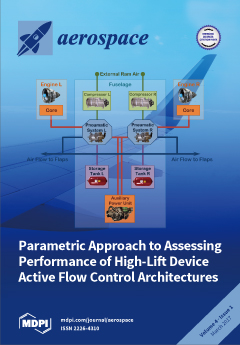Since the advent of “pulse compression” radar, the “chirp” signal (Linear Frequency Modulation, LFM) has been one of the most widely used radar waveforms. It is well known that, by changing its modulation into a Non-Linear Frequency Modulation (NLFM), better performance in terms
[...] Read more.
Since the advent of “pulse compression” radar, the “chirp” signal (Linear Frequency Modulation, LFM) has been one of the most widely used radar waveforms. It is well known that, by changing its modulation into a Non-Linear Frequency Modulation (NLFM), better performance in terms of Peak-to-Sidelobes Ratio (PSLR) can be achieved to mitigate the masking effect of nearby targets and to increase the useful dynamic range. Adding an appropriate amplitude modulation, as occurs in Hybrid-NLFM (HNLFM), the PSLR can reach very low values (e.g., PSLR < −60 dB), comparable to the two-way antenna sidelobes in azimuth. On the other hand, modern solid-state power amplifier technology, using low-power modules, requires them to be combined at the Radio Frequency (RF) stage in order to achieve the desired transmitted power. Noise Radar Technology (NRT) represents a valid alternative to deterministic waveforms. It makes use of pseudo-random waveforms—realizations of a noise process. The higher its time-bandwidth (or
BT) product, the higher the (statistical) PSLR. With practical
BT values, the achievable PSLR using pure random noise is generally not sufficient. Therefore, the generated pseudorandom waveforms can be “tailored” (TPW: Tailored Pseudorandom Waveforms) at will through suitable algorithms in order to achieve the desired sidelobe level, even only in a limited range interval, as shown in this work. Moreover, the needed high
BT, i.e., the higher time duration
T having fixed the bandwidth
B, matches well with the low power solid-state amplifiers of Noise Radar. Focusing the interest on (civil) surveillance radar applications, such as ATC (Air Traffic Control) and marine radar, this paper proposes a general review of the two classes of waveforms, i.e., HNLFM and TPW.
Full article





